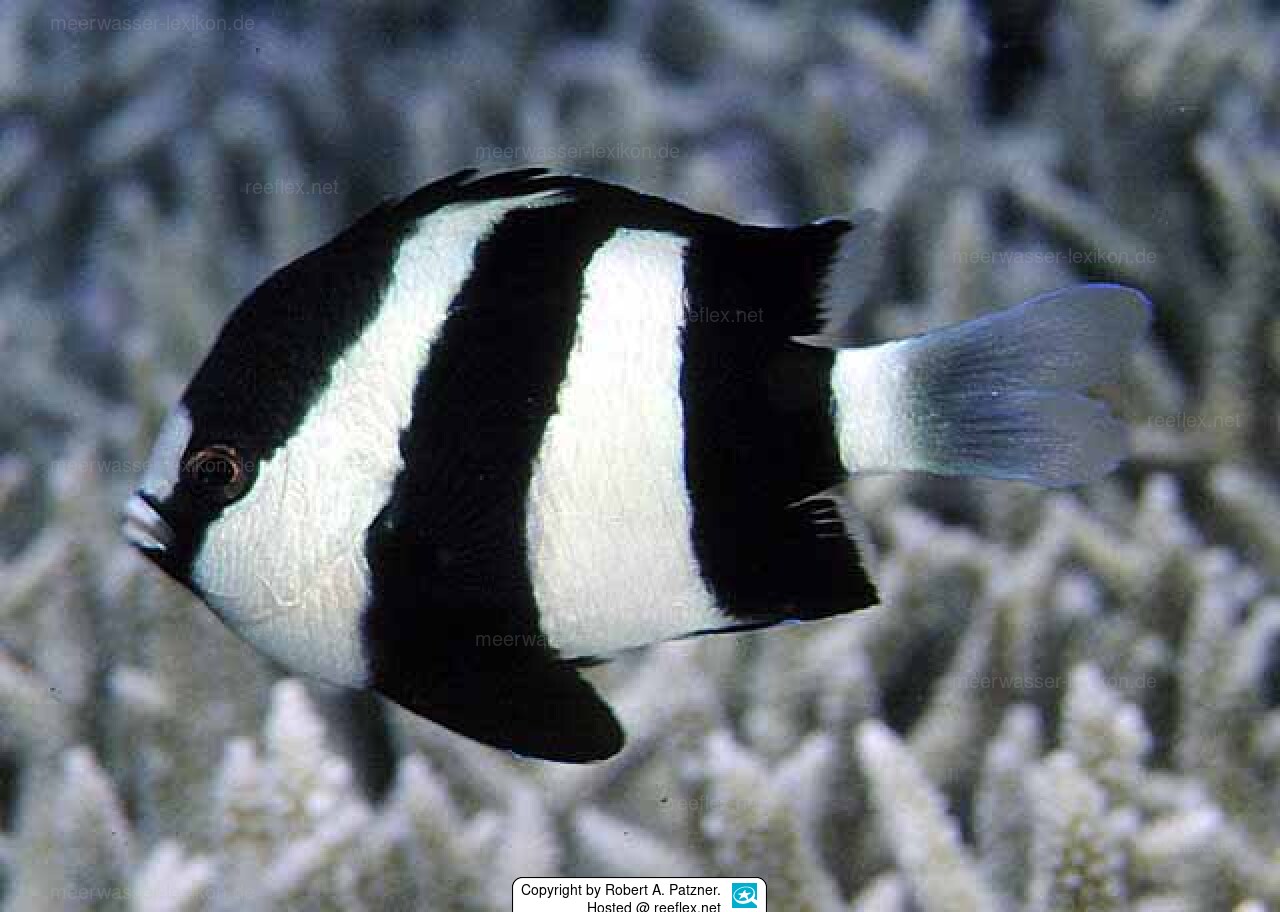Info
(Linnaeus, 1758)
Very agressive like all Dascyllus. Very easy to keep even for beginners. You should obtain two younger ones and keep them as pair.
Keeping them as group (they are not swarm fishes from my opinion) will only work in very large tanks with natural hiding places (acropora corals).
Synonyms:
Abudefduf caroli Curtiss, 1938
Chaetodon arcuanus Gmelin, 1789
Chaetodon aruanus Linnaeus, 1758
Dascyllus arnanus (Linnaeus, 1758)
Dascyllus blochii Castelnau, 1875
Pomacentrus devisi Jordan & Seale, 1906
Pomacentrus emamo Lesson, 1831
Pomacentrus trifasciatus De Vis, 1884
Tetradrachmum arcuatum Cantor, 1850
Tetradrachmum aruanum (Linnaeus, 1758)
Classification: Biota > Animalia (Kingdom) > Chordata (Phylum) > Vertebrata (Subphylum) > Gnathostomata (Superclass) > Pisces (Superclass) > Actinopteri (Class) > Perciformes (Order) > Labroidei (Suborder) > Pomacentridae (Family) > Dascyllus (Genus) > Dascyllus aruanus (Species)
am 01.09.17#7
Ich halte nun seit gut eineinhalb Jahren 6 dieser Tiere in einem 1,8m langen Becken. Dieses haben sie sich auch wirklich gedrittelt. Es haben sich drei Pärchen heraus gebildet, die ihr eigenes Revier gegen jeden Eindringling verteidigen.
Und genau da liegt der Knackpunkt:
Selbst bei dieser Beckenlänge würde ich zukünftig maximal 1 Paar halten wollen. Wobei es auch auf die Tiere an sich anzukommen scheint. Während zwei Pärchen noch einigermaßen friedlich mit ihren Mitbewohnern umgehen, beansprucht das dritte einen Teil des Beckens komplett für sich alleine. Lediglich der Ramosus ist in diesem Bereich geduldet.
Dennoch wunderschöne und unglaublich interessante Tiere.
am 06.03.11#6
Ich hatte zwei von den "Brüdern" bei mir im Becken, einer ist leider den freiwilligen Sprungtod gestorben. Nach ein paar Tagen habe ich einen neuen Partner eingesetzt und siehe da sie vertrugen sich. Ein paar Tage später gehörte das gesammte Becken den beiden Raufbolden. Die anderen Fische incl. der Baggergrundel hatten nichts mehr zu lachen. Ich habe mich daher entschieden den zugesetzten Fisch wieder zu entfernen. Nach ein paar Stunden war alles wieder ruhig.
am 25.02.10#5
Ich halte dieses Tier seit ungefähr zwei Wochen und konnte bis jetzt kleine Revierkämpfchen beobachten (nichts ernstes). Meine zwei Dascyllus aruanus haben jeder ein kleines Revier, dass sie agrressiv verteidigen. Sie lassen sich prima in kleinen Becken mit einer Weißband-Putzergarnele halten. Bei mir nehmen si jedoch nur Artemia als Hauptfutter an. Kriil ist ihnen zu groß und Flockenfutter spucken sie wieder aus. Diese Fische sind ideale Einsteigerfische fürs kleine Aquarium, doch sollte man sie im Auge behalten.







 Dr. Robert A. Patzner, Österreich
Dr. Robert A. Patzner, Österreich




























